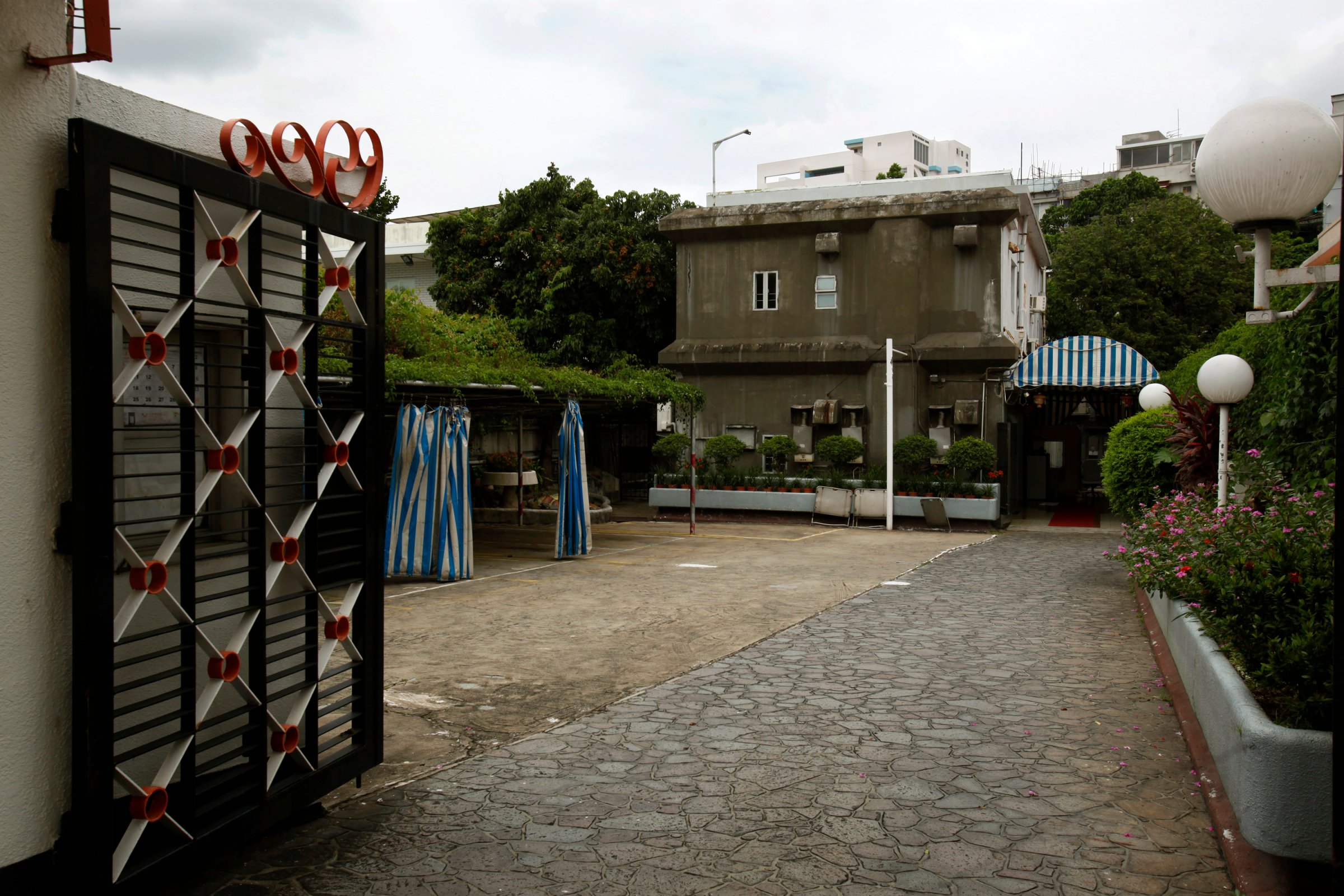
Until his sudden death in Hong Kong in 1973, at the age of 32, martial-arts icon Bruce Lee lived in Kowloon Tong or “Nine Dragon’s Pond”— a quiet neighborhood on the Kowloon peninsula. He inhabited a property that is modest looking by international standards but in densely populated Hong Kong, where land is at a premium, is considered positively palatial, tucked away in an affluent part of town, inland from the lights of the island’s dazzling skyline.
Lee is as iconic to Hong Kong as that glistening string of skyscrapers, but unlike, say, Elvis Presley’s Graceland, this fallen king’s castle is no monument to his legacy. Mainland Chinese philanthropist Yu Panglin quickly bought the property in 1974 and allowed it to be used as a love hotel: a place where rooms are rented out by the hour to couples, some on illicit trysts, to be sure, but others harried spouses, looking to escape cramped marital quarters — often shared with extended family — for a modicum of privacy.
Yu died in May, leaving the fate of Lee’s Cumberland Road home up in the air. Yu’s grandson Peng Zhibin recently told the South China Morning Post that his grandfather’s estate was “finalizing the legal procedures,” without specifying to what end. Meanwhile, Lee’s fans and family are rallying to preserve the house as a landmark to the late martial arts superstar.
“Fans all over the world hope Lee’s former residence can be preserved and made a gallery to commemorate our beloved star. But there’s very little we can do,” Wong Yiu-keung, who chairs fan group the Bruce Lee Club, told the Post. “Only the landlord and the government can make things happen.”
It would be a milestone event for Lee’s fans in Hong Kong, a city that seems to have forgotten its “No. 1 son,” as he is known to some here. Several years ago, Yu tried to work with the local government to donate the house as a Bruce Lee museum. When that plan fell through in 2011, Yu then unsuccessfully tried to sell the house for around $23 million, and the Hong Kong Heritage Museum opened a Bruce Lee exhibit as a sort of consolation prize to his fans.
In 2005, on Lee’s 65th birthday, the city unveiled a statue of him on the Tsim Sha Tsui waterfront — a gesture that only came about, Wong said, at the behest of Lee’s fans around the world. Curiously, the same thing happened that year in Mostar, a small city in Bosnia. (“We will always be Muslims, Serbs or Croats,” a Bosnian youth leader told the BBC at the time. “But one thing we all have in common is Bruce Lee.”)
Lee’s daughter, Shannon, has spoken out in general favor of the preservation of her childhood home as a memorial to her late father, though she is not party to the estate negotiations.
“I wish I had the answer to how to go about preserving the house,” she told the Post. “Perhaps with the success of the exhibition at the Heritage Museum, the government or a civic-minded individual will step back in to reopen discussions with the family. I hope so and would lend my full support.”
More Must-Reads from TIME
- Cybersecurity Experts Are Sounding the Alarm on DOGE
- Meet the 2025 Women of the Year
- The Harsh Truth About Disability Inclusion
- Why Do More Young Adults Have Cancer?
- Colman Domingo Leads With Radical Love
- How to Get Better at Doing Things Alone
- Michelle Zauner Stares Down the Darkness
Contact us at letters@time.com